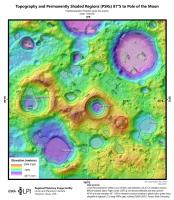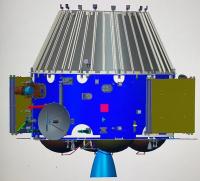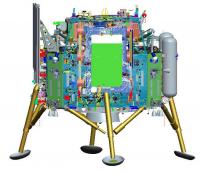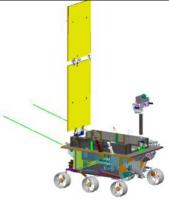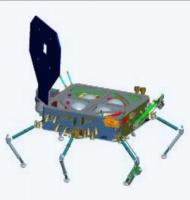Printable Version of Topic
Click here to view this topic in its original format
Unmanned Spaceflight.com _ Chang'e program _ Chang'e 7 Lunar South Pole lander-rover-hopper mission
Posted by: Cosmic Penguin Apr 25 2023, 05:44 AM
At the 1st International Deep Space Exploration Conference held in China today, https://twitter.com/CNSpaceflight/status/1650728707831791618 that Chang'e 7 (due to launch 2026) will land at 88.8° S, 123.4° E, https://www.nasa.gov/press-release/nasa-identifies-candidate-regions-for-landing-next-americans-on-moon "Peak Near Shackleton" area chosen for further studies for the Artemis III landing.
I think this is the correct area? (from Stopar J. and Meyer H. (2019) Topography and Permanently Shaded Regions (PSRs) 87°S to Pole of the Moon, Lunar and Planetary Institute Regional Planetary Image Facility, LPI Contribution 2176, https://repository.hou.usra.edu/handle/20.500.11753/1261)
Posted by: Phil Stooke Apr 25 2023, 07:10 AM
Yes, this is correct. Looking forward to this interesting mission. Has there been any word on a backup site?
Phil
Posted by: Hungry4info Sep 28 2023, 10:46 PM
Some details about this mission provided by the wonderful Seager Yu. Below is a reproduction of the information he has provided, summarized and adapted for the format of a forum post, and hopefully given a bit more permanency than what one finds on Twitter.
The architecture of Chang'e 7 appears pretty similar to the Chang'e 5/6 missions. The target landing site is 88.8° S 123.4° E. The instrument descriptions are taken from https://www.hou.usra.edu/meetings/lpsc2020/pdf/1755.pdf presentation. It also outlines the objectives of the mission:
(i) Obtaining information of lunar inner ring [sic] structure, mineral and element components, the characteristic of the electric and magnetic fields, heat flow and gravitational field,
(ii) Obtaining the distribution and source of lunar water and volatiles, directly confirming the presence and source of water ice on the Moon;
(iii) Imaging the energetic neutral atoms with high space-time and energy resolution of the Earth's magnetotails and understanding the dynamics of the Earth's magnetotails,
(iv) Researching the space environment such as the lunar surface magnetic field, lunar dust and particle radiation, revealing the mechanism of solar wind causing the magnetic anomalies in the vortex region of the lunar surface.
Chang'e 7 has a relay satellite, a lander, a rover and a "mini-flying probe," which all together will have 23 payloads, with a total mass of 8200 kg. The Chang'e 7 relay satellite will facilitate communication with the south polar region of the Moon.
This is the Chang'e 7 orbiter. It has the following instruments.
- High Resolution Stereo Mapping Camera (high-precision topography of the lunar surface)
- Miniature Synthetic Aperture Radar (high-precision topography of the lunar surface and permanently shadowered areas)
- Wide-Band Infrared Spectrom Mineral Imaging Analyzer (high-precision mineral composition and surface thermal environment)
- Lunar Neutron Gamma Spectrometer (high-precision characteristic gamma ray and neutron flow data for lunar surface)
- Lunar Orbit Magnetometer (combined with rover to study lunar micromagnetosphere)
This is the Chang'e 7 lander. It carries the following instruments:
- Landing camera (landing area and topography data)
- Topography Camera (landing area topography data)
- In-Situ Measuring System of Volatiles and Isotopes on Lunar Surface (in-situ exploration of volatiles in the landing area)
- Lunar Soil Section Thermal Current Measuring (measuring the lunar soil heat flow)
- Lunar Surface Thermometer (Measure the temperature of lunar surface)
- Extreme Ultraviolet Camera (obtain imaging data of the earth plasma layer)
- Lunar seismograph (obtain lunar seismic data on the south pole)
On top of the lander, we see FYQ-1. Mounted on the side we see Yutu 3.
This is Yutu 3, carried with Chang'e 7. It carries four scientific payloads:
- Panoramic Camera (obtain topographic data on the rover area)
- Rover magnetometer (obtain the magnetic field and its gradient change in the rover area)
- Lunar Penetrating Radar (obtain data of shallow structure of lunar soil in the rover area)
- Lunar Raman Spectrometer (obtain data on mineral composition on the rover area).
This is the FQY-1 (飞跃器一号, which translates to something like "hopper-1"). According to Seger Yu, in addition to being a walker, it has a propulsive system allowing it to make three "hops."
The first hop appears to be a test and will fly in the vicinity of the Chang'e 7 lander and Yutu 3 rover, taking images of the two. The second hop will be into a permanently shadowed crater. The third hop will get itself out of the permanently shadowed area. From this point onward it can walk around and function effectively as a second rover.
It's instrument payload appears to be restricted to a single hydrogen isotope and water molecule detector.
Posted by: Explorer1 Sep 29 2023, 12:39 AM
FQY-1; if it works, would this be the first ever machine to walk on another body with legs? (PROP-M on Mars 3 had legs with sleds, not quite the same thing).
It certainly looks like science fiction for now....
Posted by: Thorsten Denk Feb 1 2024, 08:00 AM
An article about Cháng'é-7 , by Andrew Jones.
https://spacenews.com/chinas-change-7-moon-mission-to-target-shackleton-crater/
Thorsten
Posted by: Hungry4info Apr 24 2024, 11:45 PM
Here's a pretty interesting animation showing how the FYQ-1 deployment would work. I haven't found the full video yet, unfortunately.
https://twitter.com/Kaynouky/status/1783195702941868184
Edit:
Source is here. https://www.bilibili.com/video/BV1qF4m1w7RX/
Powered by Invision Power Board (http://www.invisionboard.com)
© Invision Power Services (http://www.invisionpower.com)
